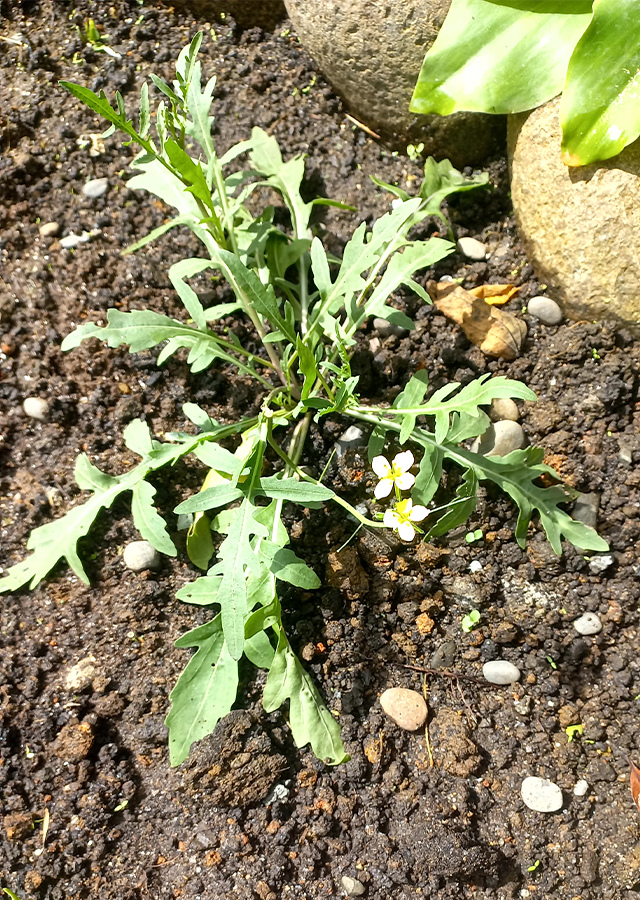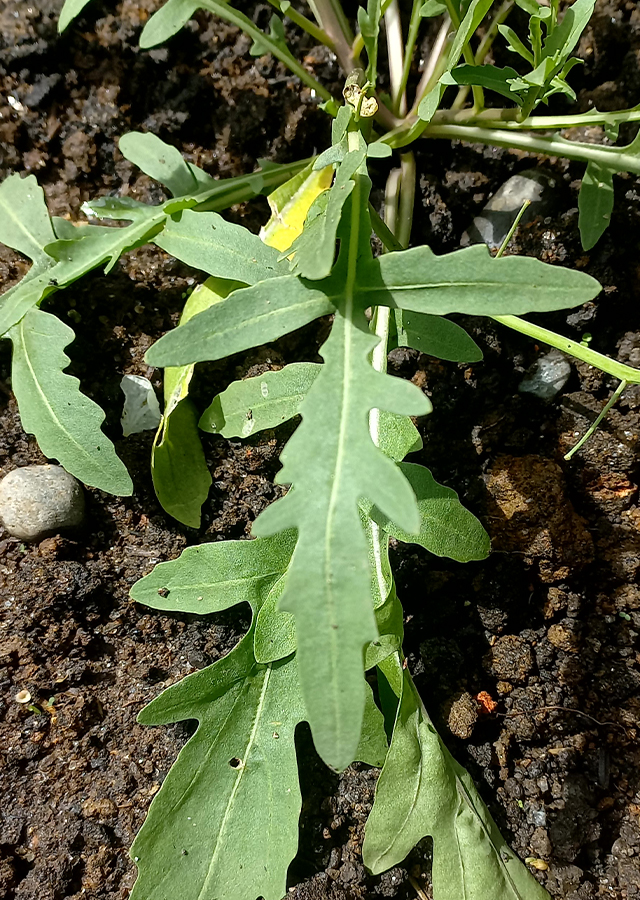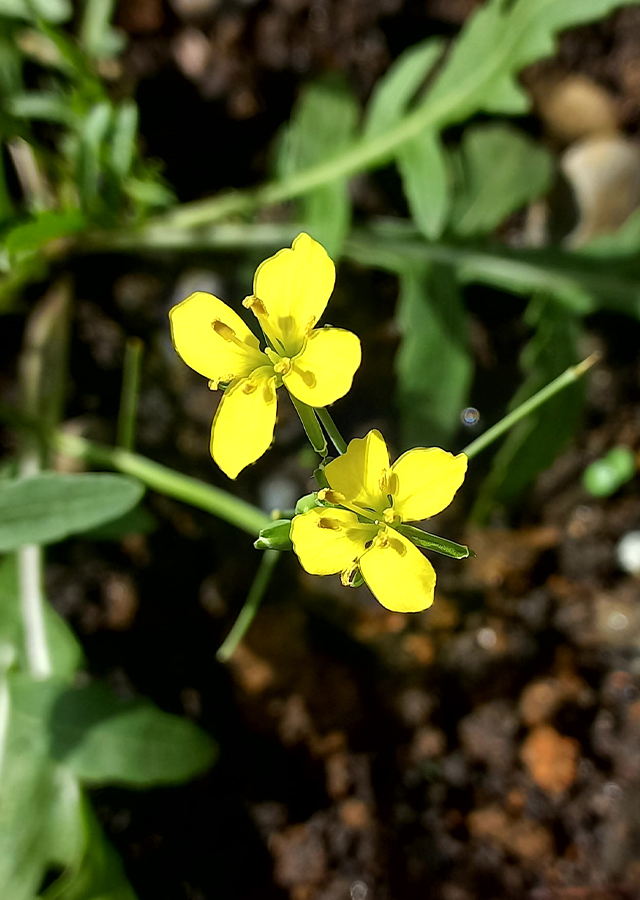Rocket
Eruca vesicaria (L.) Cav.
Brassicaceae
Location in our garden
Shading Area



Synonym
Brassica eruca L.
Brassica erucoides Hornem.
Brassica erucoides Roxb.
Habitus
Herbaceous. A fast-growing, erect, branched annual plant, growing to about 60 cm tall.
Part Used
Leaves
Seeds
Growing Requirements
Full Sunshine
Need Shade
Habitat
Roadside
Terrestrial
Overview
Eruca vesicaria is native to western Asia and the Mediterranean region, and cultivated worldwide. It is used as animal food, a poison and a medicine and for fuel and food. Seeds, flowers, and pods are edible. Young leaves are eaten raw or cooked. Leaves used as garnish on salads. Fresh leaves have a tart, bitter, and peppery flavour. The seed oil is mainly used in industries as a lubricant, for soap-making, as an illuminating agent, in massaging, in medicines and in cooking as a salad oil. It can also be used for lighting, burning with very little soot.
Vernacular Names
Roquette commune (French), Ackerrauka (German), Ruchetta (Italian), Arrúgula (Spanish), Roketsuto (Japanese), Jamba (Hindi), Zi ma cai (Chinese).
Agroecology
Rocket can be cultivated from the temperate zone to the tropics. Found in waste ground, fields, olive groves, stony hills, tracksides etc. It grows best in areas where annual daytime temperatures are within the range 15-25 °C, but can tolerate 8-29 °C. It is tolerant of winter cold with temperatures dropping below freezing for short periods. It prefers a mean annual rainfall in the range 500-900 mm, but tolerates 300-1,100 mm. Succeeds in full sun, but prefers some shade from the hottest sun. A very easily grown and fast-maturing plant, it succeeds in most soils and conditions, though it prefers sandy and sandy loam soils. Prefers a pH in the range 7-8, tolerating 6-8.5. Once established, plants are quite drought resistant. Plants can be ready for harvest within 40 days of sowing the seed.
Morphology
- Stem - branched, glabrous or sparsely covered with rough hairs.
- Leaves - alternate, simple, glabrous or sparsely pilose pinnatifid, light green when young.
- Flowers - 1.5 to 2.0 cm in diameter, 4 creamy white clawed petals, with purple veins and 6 yellow stamens.
- Fruit - elongated siliques dehisce when dry, 11–40 mm, splitting to release about 20 seeds.
Cultivation
Generative propagation is by seed - sow in situ. Germination is usually very quick and free, taking just 24 hours at 25 °C.
Chemical Constituents
Alkaloids, flavonoids (kaempferol, rhamnocitrin), saponins, tannins, phenols, fatty acids (palmitic acid, stearic acid, oleic acid, linoleic acid, linolenic acid, erucic acid), steroids, essential oils.
Traditional Medicinal Uses
- It is used medicinally by the ancient Greeks and Romans. Historia Naturalis records rocket as an antihelmintic, treatment for eye diseases, and aphrodisiac.
- The leaves are antiscorbutic, diuretic, rubefacient, stimulant and stomachic.
- The seed is rubefacient and stimulant. The powdered seed possesses antibacterial activity. The oil can be used for massage and for soothing the skin.
- In Palestine, used for skin and reproductive diseases. For skin disease, ground leaves applied as poultice to affected skin areas.
- Studies suggest antibacterial, antioxidant, hepatoprotective, nephroprotective, anticancer, antiulcer, anti-thrombotic, anti-platelet properties.
Part Used
Reference Sources
- Fern, Ken. (2021). Useful Tropical Plants: Eruca vesicaria. http://tropical.theferns.info/viewtropical.php?id=Eruca+vesicaria. 15-05-2022.
- Go Botany. (2022). Eruca vesicaria — garden-rocket. https://gobotany.nativeplanttrust.org/species/eruca/vesica. 15-05-2022.
- Kew Royal Botanic Gardens. (No date). Plants of the World Online: Eruca vesicaria (L.) Cav. https://powo.science.kew.org/taxon/urn:lsid:ipni.org:names:1137625-2. 15-05-2022.
- Stuartxchange. (2020). Philippine Medicinal PLants: Arugula. http://stuartxchange.org/Arugula. 15-05-2022.

